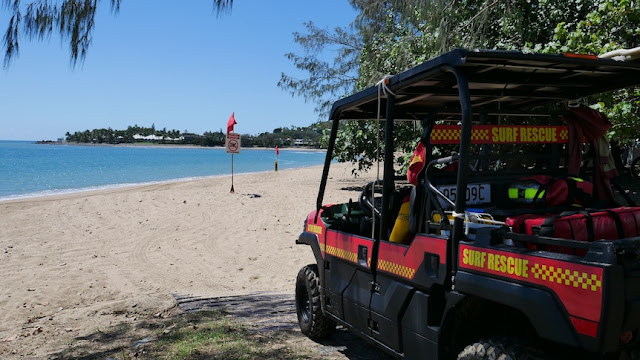Teenager Death From Box Jellyfish Sting
Tragically, it can happen anywhere there is a known, or unknown, habitat and presence of box jellyfish. It can be a beautiful, calm, tropical sandy beach. There can be many people, a few or none. Someone might even be wearing a protective lycra suit, though this is unlikely.
Sometimes there are warning signs, often not. Perhaps there is a prevention net, usually there isn't. Or, there might be a lifeguard or two patrolling the beach and occasionally dragging a sampling net.
There may recently have been a mild or serious jellyfish sting there, or far worse, a fatal sting, but there is no obvious record or information.
You, eager to swim, wanting to cool down in the immersive sea in such a spectacular setting, naturally head unaware into the water. Little do you realise, or maybe you do but what are the odds, that the risk is ever-present and this swim could be your last.
On the weekend, at a popular beach in Australia's far north-east, it happened, again. Sadly, a 14-year old boy is now dead.
The range of several species of deadly chironex box jellyfish extends from tropical north Australia to South-East Asia. Here, at Eimeo Beach near Mackay in Queensland, is well known as a box jellyfish hotspot. There are no prevention nets as the fluctuating tides make this impossible with the only proactive defence against this dangerous menace being lifeguards dragging nets on a regular basis. Though like fishing, their target can be elusive, evasive, maybe a metre more or less from where they stand.
While highly recommended, if not essential, no-one it seems aside from lifeguards and marine biologists - all who know better - wear full-length protective lycra swim suits. They can to some look a bit ridiculous and out of place; who doesn't want that liberating, unencumbered feeling of seawater on skin.
This blog has been banging on about box jellyfish safety for over a decade. Is it acceptable that lives are lost to deadly stings when they are actually preventable? Suits, people, suits. Body suits are 100% effective in saving lives.
When it's box jellyfish season in Australia, sound advice is don't swim. Simple. Most don't, some do. Best do it in a pool!
Surfers, arguably the ocean's coolest and bravest who happen to wear wetsuits for protection from the cold, realise the risk along Australia's coast and there's little they can do if a great white comes calling. 4 to 5-metres of apex predator with powerful jaws and razor-sharp teeth will do unspeakable damage. A box jellyfish while highly venomous is just tentacle and no brain that accidentally attaches to the skin causing instant pain and a potentially quick death.
A suit is certain, absolutely certain, to stave off a sting. It may not be cool, it's unfashionable, yes you want a tan and to really feel the ocean, but wearing a suit only while in the water will put a thin impenetrable layer, a life-saving shield, between you and possible death. Simply, take it off when sun baking on the sand!
Who cares what you look like and what others may think. Paradise is a wilderness so you need to take precautions. Instagram is fake so don't believe the hype. Take care of yourself, your family, your kids. You have one chance.
At Eimeo Beach, it was this teenager's mother's birthday. The family was relaxing and enjoying themselves, and now they are burying their beloved young son and brother. He was only 14. This could be Thailand or Malaysia or the Philippines or anywhere. Please, swim within a net or wear a suit. You and your loved one's lives just may depend on it.
Link To Article:
Further Reading:




Comments
Post a Comment